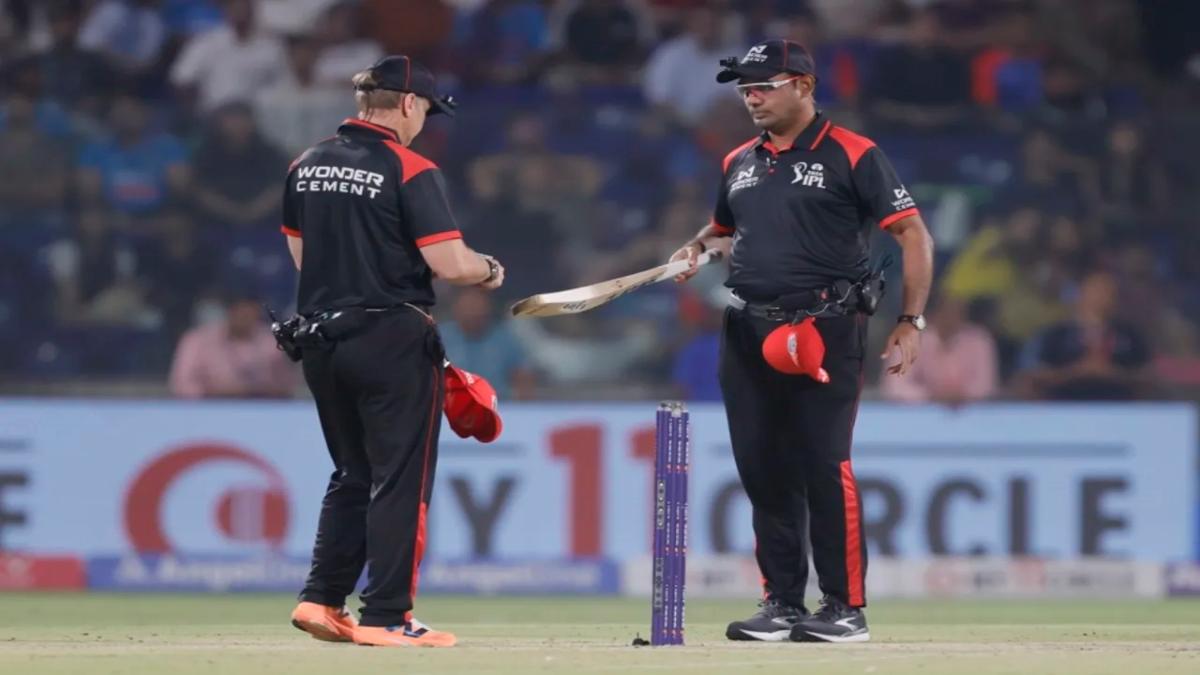Bat checks have become a talking point in IPL 2025 after match officials began testing the dimensions of bats with a gauge on April 13. Every batter now has their bat measured either before or during the match — a noticeable shift in how the tournament approaches equipment regulations.
So, why this sudden clampdown?
What’s behind the bat checks?
Though the IPL hasn’t issued an official statement, ESPNcricinfo has learned the move is aimed at maintaining a fair balance between bat and ball. The objective is to prevent batters from gaining an unfair advantage through oversized or custom bats that exceed the legal dimensions outlined in cricket’s laws.
This new approach was agreed upon by the IPL’s key decision-makers, approved by the tournament’s governing council, and implemented mid-season.
How did bat checks work before?
In earlier IPL seasons, bat dimensions were checked only occasionally — usually the day before the match — and by the fourth umpire. A few players were randomly selected, and often only one bat per player was tested. This meant players could use a compliant bat during testing, then switch to a different bat for the game.
The new system plugs that loophole.
Why now?
Concerns had been quietly raised by match officials at the start of the 2025 season about certain bats appearing to be over the limit. Rather than rely on subjective calls or selective checks, the IPL opted for a standardised process during live matches.
The rule draws inspiration from the ECB, which introduced similar checks in domestic cricket in 2018. Under MCC Law 5, the maximum allowed bat dimensions are:
- Edge thickness: 4 cm (1.56 inches)
- Overall depth: 6.7 cm (2.64 inches)
- Width: 10.8 cm (4.25 inches)
How does the gauge work?
The gauge is a rectangular device with a house-shaped cut-out. The bat must pass cleanly through the cut-out to be approved. Even permitted additions like toe guards or repairs must not make the bat exceed the limits.
When and how are bats tested?
Before the checks were introduced on April 13, all teams were notified and provided with gauges for players to test their own bats in advance.
On matchdays:
- The on-field umpires check the bats of incoming batters.
- The fourth umpire checks the bats of both openers before each innings.
- If a batter changes their bat during the innings, the new one is tested on the spot.
If a bat fails the test, it is marked and cannot be used for the rest of the match.
What happens if a bat fails?
Unlike the ECB — which penalised Essex with a 12-point deduction during the 2024 County Championship after one of their batters used a non-compliant bat — the IPL does not impose any formal sanctions. The only consequence is that the bat is banned from match use.
So far, only two players have been flagged: Sunil Narine and Anrich Nortje, both of Kolkata Knight Riders.
How are players reacting?
Some batters, especially tailenders and overseas players, have been caught off guard. One tailender reportedly had all seven or eight of his bats fail the gauge test. The change particularly affects players who use custom-made bats, often crafted outside India.
Previously, due to random checks and the lax timing of inspections, players could swap in larger bats on matchday without much risk. The IPL’s new rule now closes that loophole — a move intended to preserve a fair contest between bat and ball as the modern game increasingly favors powerful hitting.













